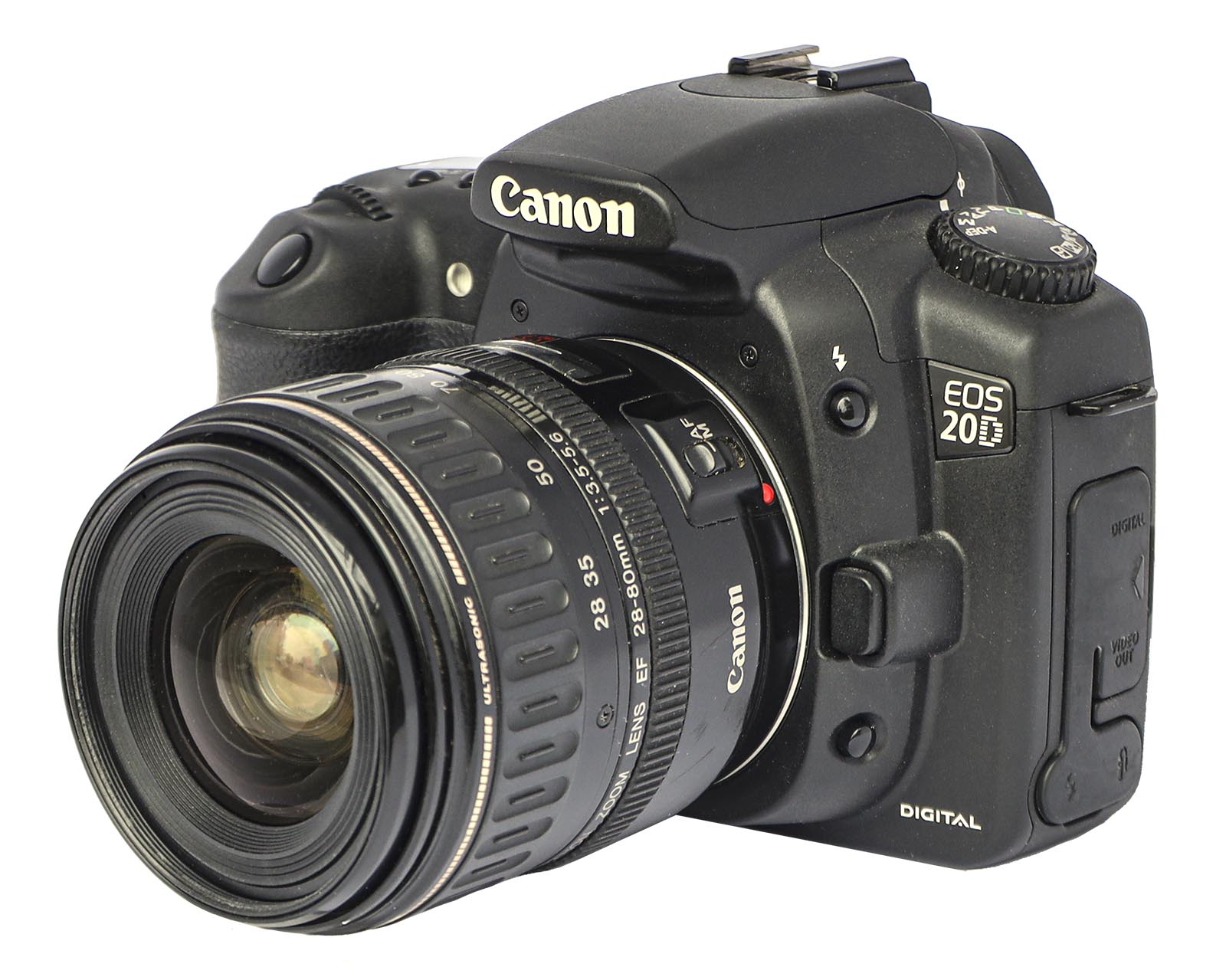
The Canon 20D brought to market
in September of 2004 and was the first prosumer camera to have the new EF-S lens mount which would accept EF and the new EF-S lenses.
With this camera the “D” series
continued its drift towards increasing professional feel and features. It is clearly one of the “D” series in look and feel but it has several new or improved features.
The first and most noticable change is the increase in resolution to 8.2 mpx. Not so large by today’s standards but in 2004 it was substantial.
The turn on time in the 10D was 2.5 seconds. In the Canon 20D this has been cut to 0.2 seconds. A major upgrade. Frames per second is up from 3.3 to 5 for up to 23 frames. The processor is a new Digic II chip which was first seen in the EOS 1D Mark II.
And the list of improvements goes on. DP Review of this Camera is available at DP Review and it has far more detail than we are going into. But from this short description you can see that this camera is a serious upgrade from the 10D.
In the Collection I have:
Collection No.: C-40
Serial No.: 1320701933
Condition: Excellent
Accessories: Battery grip BG-E2 , battery BP-511/512 and charger CB-5L
The is an interesting variation on the Canon 20D. Most digital cameras have an IR filter in front of their sensors to block infrared radiation. This is required to get the right color balance.
However, those who take photographs of the sky, astrophotography, find this to be a problem. Much detail in the sky is in the longer wavelengths and in particular the wavelength of the alpha-line of excited hydrogen. The low pass filter blocks these wavelengths.
In the Collection I Have:
Collection No.: C-183
Serial No.: 1520900670
Condition: Excellent
Notes: Externally this camera
looks like any other 20D. It is a permanent IR conversion and can take only IR photographs.
To remedy the problem Canon offered the 20Da in June of 2005 in which the IR filter was removed. This allowed an increase of around two and a half times in the strength of these low frequencies getting to the sensor.
Other minor tuning was incorporated all of which justified the naming of a new model. However, the changes in the camera threw off the color balance for regular daylight photography.
I mention this camera for completeness but, unfortunately, I do not have one.
IR Conversions
I may not have a 20Da but I do have something similar: an IR converted 20D. There is a company in the United States that converts digital cameras for infrared photography: LifePixel.
As I have said, digital camera sensors are sensitive to the far infrared but to secure correct color balance these wavelengths are filtered out by an IR filter over the sensor. This filter is not completely effective and it is possible to use an unmodified camera to take infrared photographs but it involves the use of very dark very red filters. Consequently long exposures and tripods are involved.
However, by removing the IR filter, thus allowing infrared light to get to the sensor, and installing a filter for normal light, to restrict sensor sensitivity to the longer wavelengths, an infrared camera is created. Once done, it is possible to take IR photographs with reasonable ISO speeds. This is a simplistic explanation but there is more information on the LifePixel website.
There are many other types of conversions that can be done including one that removes all filters in front of the sensor and then allows filters in front of the lens so that the same camera can take normal and IR photographs. Checkout the LifePixel website
This is a photograph from an upstairs bedroom in our home taken with the IR converted 20D. Because blue is strongly filtered out skies are dark to black and clouds become very dramatic. Green comes through as white. Because longer wavelengths travel thru mist well the mountains themselves are very clear.
This is another image with the converted 20D. I have processed these images in Lightroom for contrast but I have not changed the color balance on this one. This is how the images are rendered. The colors are totally changed around and you are dealing with greyscale images with a brownish tint. These can be rendered as pure black and white or some color tone in post processing but essentially it is a monotone greyscale image.








